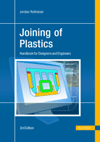
But, 50 years ago, things were quite different. Most parts were metal and threaded fasteners were the most common assembly method. The early pages of ASSEMBLY magazine were chock full of ads from vendors touting the latest screws and screwdriving equipment. Today, many of those fasteners still look the same, but the equipment for installing them has changed dramatically.
Since its debut, ASSEMBLY has been at the forefront of screwdriving technology. For example, the magazine dispersed critical information on fastener standards during a controversial debate that raged throughout the 1960s and 1970s about the inch vs. metric system of measurement. An article in the October 1977 issue reported that “a single system of international standards for metric mechanical fasteners was established [recently] when all major differences were satisfactorily resolved.”
That news came as a relief to manufacturers everywhere, who had been grappling with the pros and cons of the issue for more than a decade. An engineer from Deere & Co. (Moline, IL) wrote a three-part series of articles in late 1977 that explained how his company viewed metric conversion as “a once-in-a-lifetime chance to start from scratch, simplify, choose the best available hardware and techniques, and give them broad application.”
ASSEMBLY has also championed the development of new alloys, coatings and materials. A feature article in the November 1958 issue proclaimed that “many of the old methods of fastening have become obsolete with the advent of the air and space age. Many fasteners of traditional design on the market today were never intended to withstand the temperature, stress and vibration demands of space age vehicles.”
Manufacturers have always been concerned about reducing assembly costs and increasing productivity with both fixed and handheld screwdriving. For instance, a news item in the February 1959 issue of ASSEMBLY explained how the New Stove Co. (Newark, OH) installed automatic screwdriving equipment to save an average of 8 minutes per electric range. State-of-the-art automated screwfeeding technology eliminated the manual handling of 51 screws required to assemble Kenmore ranges for Sears, Roebuck & Co. (Chicago).
“The goal of any tool manufacturer is always lighter, faster, more accurate,” says William Staiger, marketing and product development manager at Bosch Production Tools North America (Mount Prospect, IL). “The screwdriving process has become faster [since the 1950s], because of higher-speed clutch tools, pulse tools and high-speed DC electric tools. It has become cleaner and quieter; today’s tools need less maintenance and run quieter thanks to advances in tool, clutch and motor design. Screwdriving has also become more sensitive to accuracy demands.”
In the late 1950s and 1960s, most fastening was performed with pneumatic equipment. Heavy tools, compressors and long, snaking hoses were a common sight in factories. ASSEMBLY routinely published articles on air management systems, such as a six-part series in 1964 entitled “Compressed Air for Assembly.”
Today, pneumatic screwdrivers are still used on production lines, but the tools are lighter and easier to maneuver. Assemblers also have many other options available, such as DC electric and cordless tools. In addition, many screwdriving applications now use robots.
According to Jan Aijkens, general manager of DEPRAG Inc. (Lewisville, TX), screwdriving is more popular than ever. “In automotive assembly, the amount of screws doubled over the last 30 years due to all the added features like power windows, anti-lock brake systems, air bags and global positioning satellite systems,” he explains.
Screwdriving is also popular today because of widespread recycling initiatives. “A screw joint can be opened for disassembling parts, such as PC boards,” says Aijkens. “[And, because screws make it easy to repair products], not a single producer of mobile phones is clipping, gluing or welding phones.”
After OSHA was created in 1971, manufacturers became more aware of safety and health issues on the plant floor. Widespread concern over rising workmen’s compensation claims due to repetitive motion injuries forced screwdriving equipment vendors to develop ergonomic tools that were easier to grip and use. They also turned to plastic housings that were much lighter than their metal-clad ancestors.
“Ergonomics began to get more prevalent as a requirement during the 1970s and 1980s,” says Andrew Bardsley, marketing manager at CP North America (Novi, MI). “This saw the design of tools with hand grips molded to fit the hand; low weight; noise, emissions and vibration; and controls that were easier to use, such as push-to-start, adjustable grips and levers.”
“The increased focus on worker health and safety has led to tools that are more ergonomic for the operator to use,” adds Alan Hirschmugl, training manager at AIMCO (Portland, OR). “For example, the design of the clutch mechanism has been improved in order to decrease the amount of torque reaction transmitted to the operator. Included in this area is the increased use of torque-reaction arms to support the tool and absorb the torque reaction in the system.”
David Scharf, director of marketing management at Cooper Power Tools (Lexington, SC), says ergonomics has now become a primary factor in tool selection and usage. “With the increased emphasis on productivity, the operator’s ability to perform the task quickly and efficiently for extended periods of time is critical,” he points out. “Additionally, with healthcare costs rising, a worker’s health is a very real factor in productivity numbers.”
Cordless tools are becoming increasingly popular on assembly lines today, as vendors continue to develop fastening equipment that features powerful, lightweight batteries and strong, reliable clutches. Battery-powered screwdrivers and impact wrenches were developed in the early 1960s for the U.S. space program. For instance, articles in the February 1964 and September 1965 issues of ASSEMBLY explained how Gemini astronauts would be conducting experiments with a zero reaction torque tool during early space walks.
“Demands on tool technology to work in space have driven the tool industry to brushless motors on Earth, advances in robotics, stability in computer programs and other countless advances that otherwise would not have happened,” says Staiger.
Product liability, quality and warranty trends have also spurred screwdriving equipment vendors to develop DC electric tools. According to AIMCO’s Hirschmugl, the first tools were developed “back in the 1930s, but then abandoned and displaced by the pneumatic vane motor. Some examples surfaced in the 1960s and 1970s, but there was a resurgence [of interest] in the mid-1980s.”
An article in the June 1972 issue of ASSEMBLY examined steps that manufacturers could take to prevent costly claims in light of “sweeping revisions of legal concepts and recently enacted laws, both illustrating the rising tide of consumerism.”
The article pointed out that “since 1960, the number of lawsuits [based on injuries sustained as a result of product defects] has risen dramatically from fewer than 50,000 in that year to more than 250,000 in 1963, to more than 500,000 in 1970. [It is expected to surpass] 1 million by 1975.” The author warned that faulty fastening was often the culprit, and he urged readers to take preventive measures.
Even 50 years ago, engineers were grappling with the consequences of applying too little or too much torque. During the early days of ASSEMBLY, the magazine published several articles that addressed this topic. For instance, “How Tight Is Tight?” in the December 1958 issue described how a torque-testing fixture could be used to test the ultimate torsional strength of a screw. That article was followed up with a piece called “What Is Proper Torque?”
During the 1960s, engineers at General Motors Corp. (GM, Detroit) began experimenting with pneumatic tool control. An article in the November 1971 issue of ASSEMBLY explained how the system was first implemented at GM’s Fairfax Assembly Plant (Kansas City, KS).
According to GM engineers, the computer-based system “provides better control of critical assembly operations than can be achieved by 100 percent inspection made with conventional hand torque wrenches.” It performed two independent functions to guarantee that the correct torque value was applied to 30 critical fastened joints on Buick, Oldsmobile and Pontiac sedans.
“Torque is a more precise science today,” says Phillip Bua, marketing manager for the motor vehicle industry division of Atlas Copco Tools and Assembly Systems LLC (Auburn Hills, MI). “Torque specifications are very low, tolerances are tighter and fasteners are smaller. DC electric tools feature full feedback closed-loop capabilities, [giving end users] the ability to not only measure the applied torque, but report the result, detect cross threads and stripped threads, and count the number of correct fastenings per component.”
The need for improved product quality was satisfied by better precision and verification through traceability in the fastening process. “Prior to the development of ISO-5393, there was no industry accepted method for torque measurement,” notes Doug Versele, global product manager at Stanley Assembly Technologies (Cleveland). “A critical component was the development of the electronic transducer for torque measurement.
“While pneumatic fastening systems could be equipped with transducers to give torque results, they needed less reliable mechanical switches to control the tool,” adds Versele. “The development of computer information systems and DC electric fastening systems made digital torque results readily available for product traceability.”
Bosch’s Staiger predicts that future screwdriving tools will incorporate additional sensors that will enable them to measure clamp load, not just torque. “When we look at torque, it is a means to an end, but it is only a reference to how tight a fastener really is,” he explains. “The true determination of tightness is clamp load, which is a little more tricky to measure.”
Rising labor costs and offshore competition are forcing some engineers to abandon manual screwdriving and semiautomatic fastening equipment in favor of fully automated systems. “Handheld systems may not be as widely used as in the past, but they remain as affordable and practical as ever,” notes Jeff Cunningham, president of Visumatic Industrial Products Inc. (Lexington, KY).
New tools, such as six-axis robots, allow manufacturers to achieve higher cycles per screwdriver spindle and faster cycle time per screw, while improving quality. Robotic screwdriving provides tremendous flexibility. Engineers can perform changeovers quickly and run small, varying-size batches of related assemblies. Robots also can drive screws from all directions, sometimes with varying torque requirements. “I see much more collaboration with robotics and screwdriving vendors in the very near future,” says Cunningham.
Further down the road, humanoid robots may perform a wide variety of screwdriving applications. In fact, engineers at Honda Motor Co. (Tokyo), Toyota Motor Corp. (Nagoya, Japan) and NASA’s Johnson Space Center (Houston) have already developed humanoids that can perform basic assembly tasks with pistol-grip screwdrivers.



